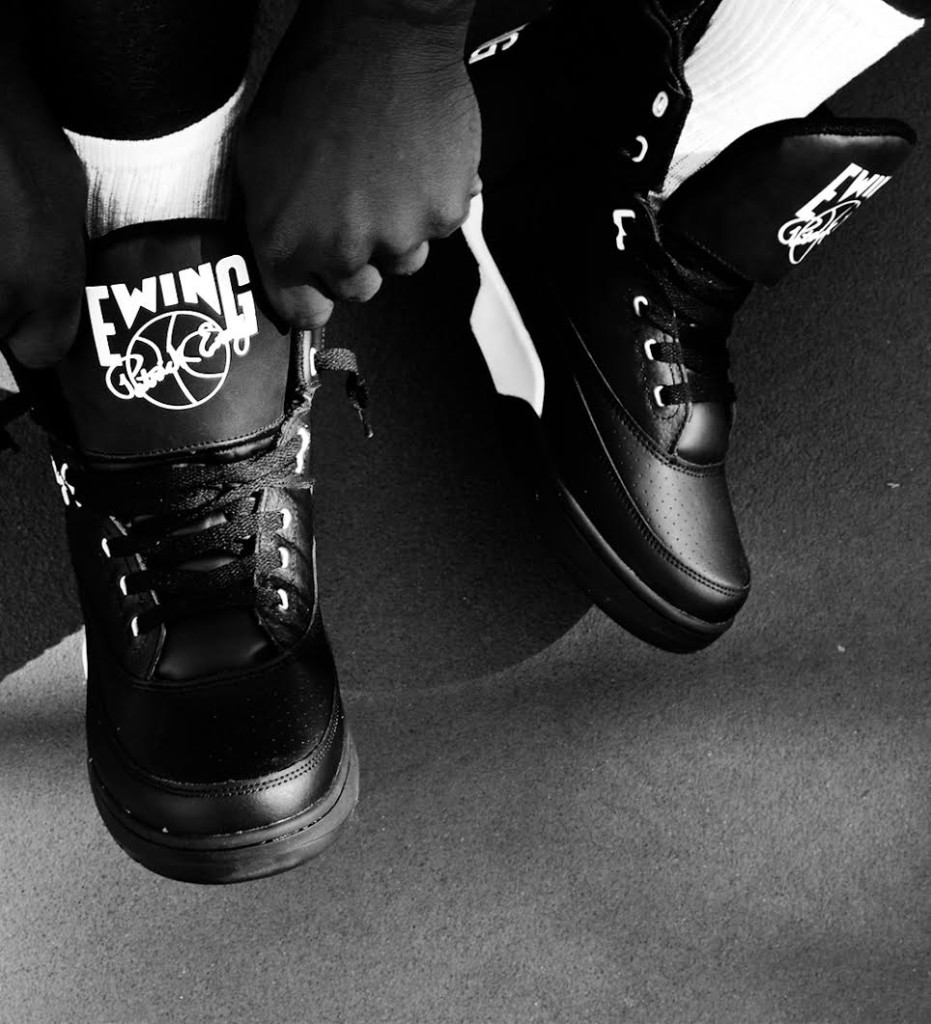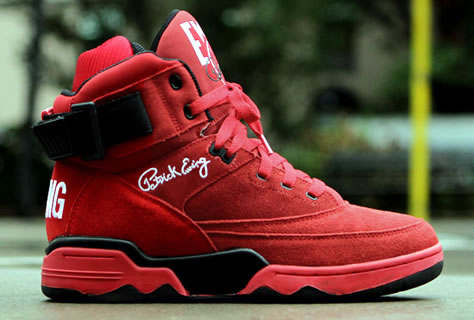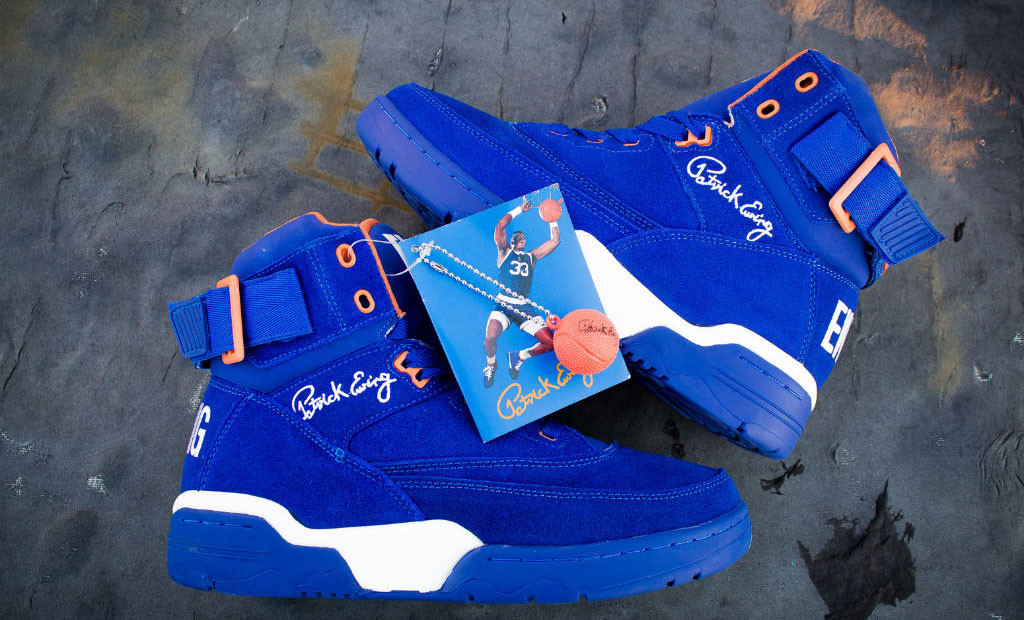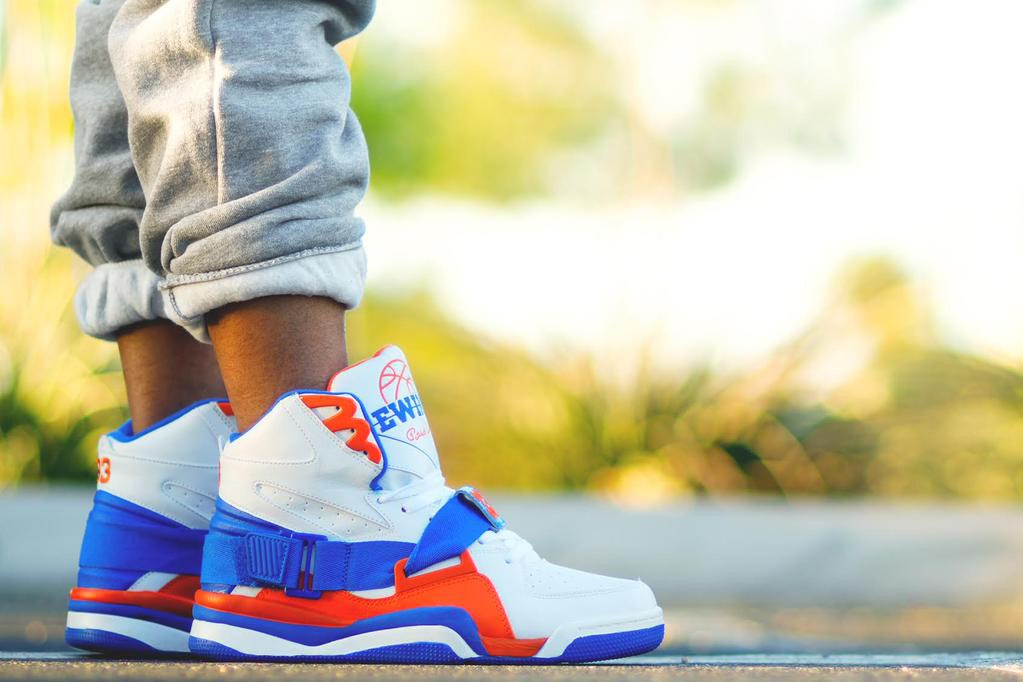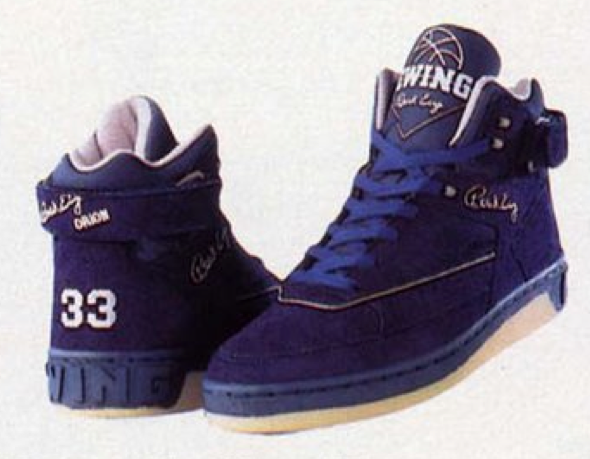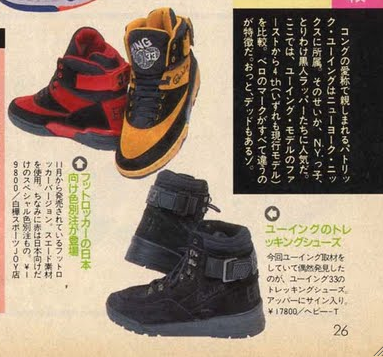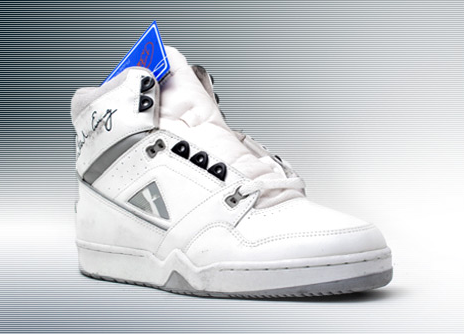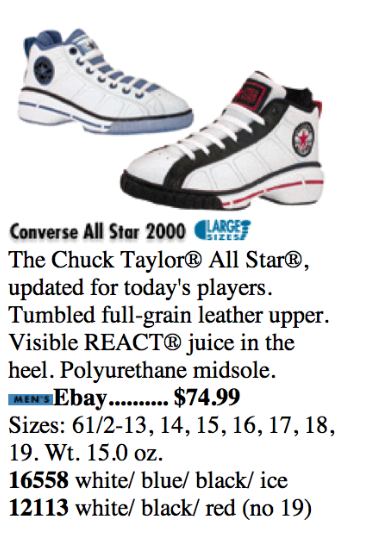By now you’re probably very familiar with designers like Tinker Hatfield, Steven Smith, Paul Litchfield and Steve Francis to name a few. Well, today you’re going to get to know another legendary designer, a designer that until now has flown under the radar of just about everyone. Meet Roy Yun, the 52 year old designer that created the legendary Ewing 33 Hi when Next Sports was designing for Phoenix and a man that with a career in the footwear industry spanning nearly 30 years held positions at Converse, FUBU and DKNY to name a few. DeFY. New York recently caught up with Roy for some footwear talk.
DeFY: Hey Roy, gotta say I’m pretty excited for this interview. As a big fan of the Ewing line you are someone that I’ve been trying to track down for a long time and one of the few designers I never thought I would track down due to the limited info out there regarding the original Ewing brand from 1989-1996.
Roy: I am very humbled.
DeFY: The 33 Hi is such a great looking shoe, how did you come up with the design?
Roy: You know what, its a combination of a lot of different shoes. At that time I think was it Jordan? I’m not a sneaker head like you guys, I love sneakers but there was a Jordan release that came out and it had a beautiful design, great lines especially in the vamp area and then there was always the Air Force 1’s. You know the Air Force 1’s when I was a buyer we would buy them all the time and resell them and they had that iconic strap around the ankle and the idea was to kind of morph the two. The biggest thing for me was the reversible strap on the 33 Hi with the 33 on both sides. That was the first thing that drove that shoe differently than anything else that was out there, it was unique. Also the shoe, if you look down at the shoe it looks very nice and sleek
and small when you put it on. Its got this design line going from the front to the back, kind of sweeping and its not cut off; its just a fluid shoe. To this day I look at the product and say its a pretty cool looking shoe and it was for a big guy, you know I mean he’s a center but his shoe size was actually very small but he was a big guy and his shoe although big looked very cool, very sleek on.
Also the midsole was totally different at the time. Yea, I’m just fortunate it took off. It was really the right timing because during that time there really was a sneaker boom and you had all this great product coming out of that era and it still continues with this whole retro perspective thats going on with all the brands. Their all doing a tremendous job of reinventing themselves with the older styles. I don’t know how long its going to last, but I gotta tell you its exciting.
DeFY: I think this is a long term thing, maybe not at the level its at now but if you look at a shoe like the Chuck Taylor that has been embraced by so many generations I think we’ll see all these great silhouettes for a very long time. Now, how involved was Patrick with the original designs?
Roy: You know, Patrick was really involved with the original designs. I worked with him, I would show him the stuff, see him after the games, went to his apartment and hang out with him after the games to show him the shoes and talk about them so yea he was very involved.
DeFY: The Concept Hi was another great shoe, (my second favorite shoe personally) and probably the second best shoe from the company depending on who you talk to. Did you design that shoe?
Roy: I actually did all of the shoes. The 33 Hi, Concept, Orion Hi and low The Orion Hi was really more simplistic that was really just a cupsole outsole but it sold really well (not as good as the 33 Hi but really good).
The Concept the Eclipse, I worked on his olympic shoe I did the Focus, I did the whole line.
DeFY: Amazing and you know whats crazy? People don’t realize how many shoe styles the original company offered. They think it was just the 33 Hi, the Concept and maybe the Rogue but there was so many good styles. I remember when I first saw the hiking boot, it was actually pretty dope.
Roy: Yea, we did the hikers we had the runners. I mean, we took his brand and this is what Patrick envisioned and really wanted to do and we took his brand and we didn’t make it a singular basketball shoe we took his vision and made it a true brand. To be honest, for quite some time we had a really good run during those years. I mean, people don’t realize, the consumer today is so young so some of them don’t realize to what extent the Patrick Ewing brand had an impact during that era and time.
DeFY: Did you work with the company from the beginning until its end in the mid to late 90’s?
Roy: When Phoenix did their shoe it was a poor quality shoe. At that time I was a shoe buyer for Wings Foot & Sport and we had a store on Fulton street, Gran concourse, roosevelt avenue, grand ave so, the way my history starts was that when I was the buyer working with my boss at that time, he was a Korean gentleman, what I would do was a lot of SMU’s (special make ups). Now you know the 576, the New Balance 576?
DeFY: Of course, thats a big one
Roy: So, at that time the New Balance 576 hadn’t exploded (and quite honestly I’m not saying it was all me) until we got involved. We did the 576 in chocolate brown leather, black leather, we did all of that, we did the suedes the whole program, this was very new for New Balance. They had no idea how this was going to turn out and so New Balance would fly me up from New York to Boston to work with their design team in Lawrence and to re color the shoe. We did the 576 and the tennis shoe.
DeFY: Wow
Roy: I used to also design shoes for FILA. So not only did I do the Ewing’s, Ewing’s were really my first true line but I did a lot of work with FILA, Ellesse, New Balance, Tiger, K-Swiss, and adidas to do a lot of special makeups for them. During that time there was such a tight network of people that knew how to detail shoes.
DeFY: Amazing. You know I’m from Long Island but for years I would scout Brooklyn for sneaker rarities and I came across stuff there that you couldn’t find anywhere else.
Roy: Oh yea, especially that area Fulton big time. Well then I was a design director for Converse and was part of the team that designed the All Star 2000, I’m not sure if you know that shoe.
DeFY: Did you?! Yea of course, its a great shoe. I gotta ask, where have you been hiding?! Haha!
Roy: Haha!
DeFY: Man, where have you been hiding?! Lol, you played such an important role in the history of footwear, of course Tinker Hatfield is the Nike guy and he’s a legend and Paul Litchfield was the Reebok guy but up until a few years ago there were so many untold stories. Take a guy like Steven Smith who created the Reebok Pump Fury and the Air Max 2009. He was relatively unknown outside of the industry until 2013 and he’s had an amazing career with tons of knowledge and great stories. I’m sure there are more out there but this history is so important for the culture.
Roy: Its a small community and people don’t realize just how small it is. You know it was a tight group of people during that time period that were really kicking butt and getting some cool shoes out there. Where have I been hiding out? I’ve been doing other stuff, raising my kids. Its been a fun ride.
DeFY: I have to ask, do you have any prototypes or old sketches?
Roy: Quite honestly I don’t have anything unfortunately. I’m not sure what happened but I lost all of that when I moved. I wish I did but unfortunately I don’t.
DeFY: Sneaker culture is huge now are your kids into it?
Roy: Yea, my son he loves this stuff. I took him to Kith, and all the stores. He loves the product. Its great to know that no matter how old you are it continues to sell.
DeFY: Well, you know I’m super happy that I was able to track you down. I thought the story of the 33 Hi and all the great shoes from the Ewing line would be lost to time and now a new generation will know an important piece of the companies history. Thank you so much for sitting down with me and the DeFY. New York family.
Roy: It was great talking with you and once again, I am very humbled.



